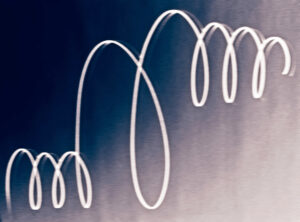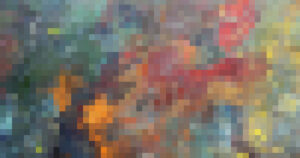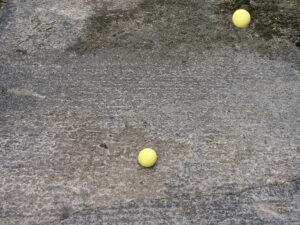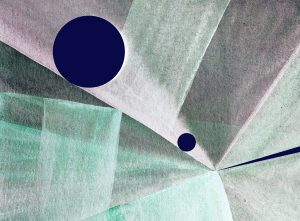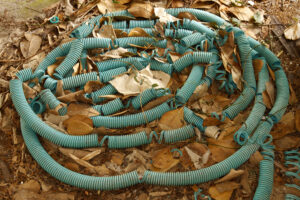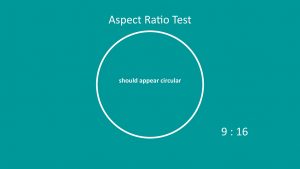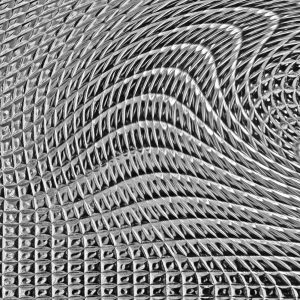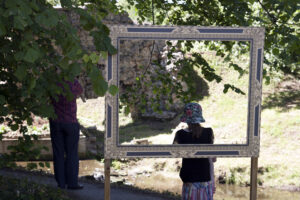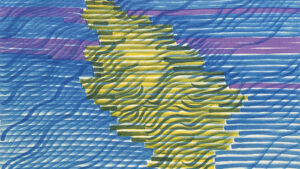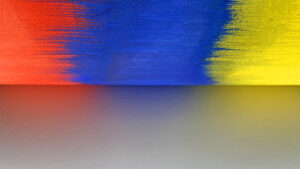The start of the 20th Century was when revolutionary ideas emerged in both art and science. What they shared was new thinking on the 4th dimension. Prior to this thinking had been constrained to, at best, three dimensions in both fields. Neither had found a way to integrate time with their core credo.
In the Arts, it can be argued that the first progress was in the area of film and animation. Both feature sequences of 2D images shown in quick succession to give the appearance of movement to the naked eye. Whether primacy can be given to the Skladanowsky or Lumière brothers[1] or indeed to much earlier users of ‘magic lanterns’[2] is another debate in itself, however resolved it establishes a principle that the 4th Dimension can be visually represented in two. Science meanwhile was constrained to the three dimensions of classical Euclid geometry and Newtonian physics.
So to the breakthroughs in science and art. In the Science world the majority of the credit for integrating time with the classical mathematics and physics of three dimensions is given to Albert Einstein with his work on the theories of relativity[3]. As with many scientific endeavours Einstein’s work drew on that of others before him but the act of unifying both the work and the concepts of time and space into demonstrable mathematical equations of a timespace continuum ensured his reputation.
At much the same time in the Art world Braque & Picasso[4] were at the forefront of Cubism. The revolution there was similar in as much as multiple perspectives of a subject from various perspectives were combined on a single picture plane, breaking the concept of viewing from a single perspective from a point in Euclidian space. The difference though was that whilst it could be considered that it might take time to change from one perspective to another the majority of the cubist work had no clear time-related aspect. This despite there being clear evidence that the early cubists, Picasso included, had been introduced to the mathematical work of Maurice Princet and Henri Poincaré based on the work by Jouffret, Esprit (1903) Traité élémentaire de géométrie à quatre dimensions (Elementary Treatise on the Geometry of Four Dimensions).
Marcel Duchamp changed all of that in 1912 with his, controversial at the time, Nude descending a staircase No.2[5]. As well as employing the cubist approach to depicting the subject, the subject itself was clearly moving from element to element, as implied in (The Treachery of) the title. So not only did this work acknowledge the break from tradition in viewing perspective it also unambiguously added the 4th dimension. Duchamp was clearly ahead of his time.
The rejection of the work by the Salon des Indépendants in Paris, whether due to jealousy or moral outrage at the concept of a nude actually doing anything but reclining passively, led to two significant developments. In the first place it heightened interest in the mainstream press both in Europe and America, more importantly it spurred Duchamp to further his thinking about the nature of art and crucially the role of both the artist and the viewer.
In the following year he started to work on what became known as ‘Readymades’. In some cases, as with his first, he combined elements, such as a bicycle wheel in its front fork and a stool. These later became known as ‘Assisted Readymades’ and he moved on by simplifying the idea by ‘creating’ several single element ones, a snow shovel and a chimney ventilator amongst others.
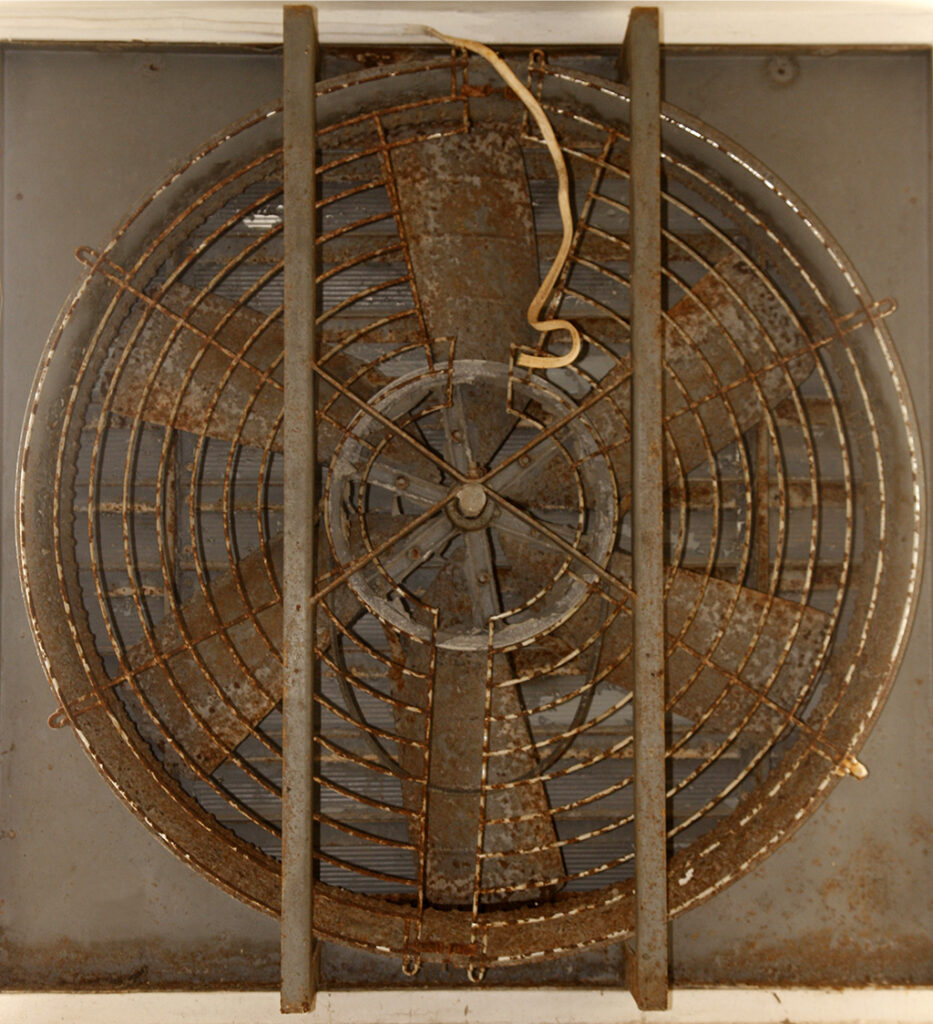
Photo by AZ from Collection TIme-Assisted Readymades
What they shared was in essence that they were mundane articles to which he added either an inscription, a title distinct from its original purpose or both. These were low key, neither attracting much attention nor being actively presented to the art world by Duchamp.

Photo by AZ from Collection TIme-Assisted Readymades
In 1917, this time in America, Duchamp chose to enter a piece into an Exhibition at the Grand Central Palace in New York. In a superb piece of irony, of which Duchamp must have been fully aware, this was being staged by the American Society of Independent Artists. This was the New York equivalent of the Paris based Society who had rejected his Nude Descending and who had adopted the same maxim of “No Jury No Prizes”. In effect a guarantee that all work submitted by paid-up members of the society would be accepted. The piece he chose to put forward was a urinal, which he obtained from a builders merchant and simply signed with a pseudonym “R Mutt.” and dated 1917. Duchamp used a pseudonym as he was on the organising committee and wanted the piece, which he had entitled Fountain to be considered on its own merit. The only other alteration to the piece was that its orientation was changed so that it was effectively lying down at 90 degrees to the angle it would have been had it been installed to fulfil its original purpose.
What was different here from previous Readymades was the deliberate provocation of a debate by choosing to actively present the change of status of an otherwise mundane and functional object to be something considered more on an aesthetic and conceptual level on the say so of an artist. By using a pseudonym, of course, Duchamp had also eliminated any chance that the status of the artist, as judged by their previous body of work, contributed to the consideration.
The debate invoked was, as Duchamp intended, in a large part at least about whether the piece submitted as an artwork was actually art. Duchamp’s position, although not expressed directly during the debate to the committee, was, of course, that it was. He asserted that what makes an object a piece of art is the act the artist in selecting and proposing it. This time it was not rejected but placed behind a partition, out of view of those attending. “Suppressed” as Duchamp expressed it.
Despite the positioning, the fact it had been submitted and the debate that ensued became known and news. A photograph of it was published and a century later it is very much a significant part of art history, regarded by many as a turning point and the birth of conceptual (as opposed to retinal) art. In this way Duchamp added not just time as the 4th Dimension to art but also the infinite space of the human imagination as the 5th. In 1959 Duchamp further expanded the 5th dimension by asserting that an artwork is incomplete until it has been viewed. He said, “I have a very definite theory—let’s call it theory, so that I can be wrong—that a work of art exists only when the spectator has looked at it.”
Even in his statement about the existence of a work of art he left space for others to join in the discussion. So it seems the debate about what is art (and its purpose) is, fittingly and like time, eternal. However, if you take a definition that art is anything that a person put forward with the intention of provoking a response in a viewer, Fountain meets that in spades, or should that be in shovels?
One last thought which plays on Duchamp’s theory – does the decision to place Fountain out of view behind a partition actually bring art into the imaginary space, represented in science as complex numbers? I certainly hope so because complex numbers are held to be the route to higher dimensions proposed in the science of String Theory[6] and the 6th dimension is the plane of all possible worlds with the same initial conditions as ours. Only four more dimensions to go then.
[1] In 1895 both pairs of brothers, Skladanowsky and Lumière gave public performances of projected “moving pictures” to paying audiences in Berlin & Paris respectively.
[2] Magic Lanterns originate in the 17th Century, their use with moving pictures from the late 18th
[4] See Art Term Cubism at Tate
[5] Nu descendant un escalier n° 2
[6] Article on Complex Numbers, String Theory and Dimensions by Vijay Ganti
